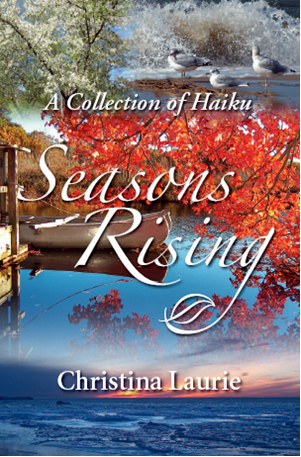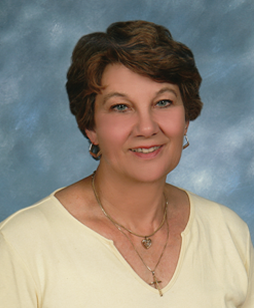
What is Haiku? A Seasoned Poet Explains
by Christina Laurie
Three lines, 17 syllables.
It doesn't sound like much to work with when writing a verse. Writing haiku poses a challenge to the seasoned poet as much as a beginning fourth grader. You must say all you want in a small space.
When one is accustomed to reading western poetry, one may find haiku a shock; it seems to end before it has really begun. But the joy of the piece is that the mind carries the theme into the reader's experience. You don't need to say it all.
Inferences in haiku force the reader to finish the poem. It's called the "ah-ha" moment in haiku, that leads to the completion of the idea in the reader's mind.
Haiku is an ancient form of Japanese verse that dates back over 200 years. Early haiku was often accompanied by calligraphy, brush painting or literature and was, for early poets, a lifetime study.
I began my study of the little verse in college in a World Literature class and have been publishing it for over 40 years. Although I have published hundreds of poems and haiku over the years, my favorite form of poetry is the haiku.
Haiku usually consists of three lines divided into seventeen syllables. The first and third lines have five and the middle seven. A season is often stated or hinted at in the first two lines. Here are a few examples:
- Naked birch branches
dripping post-dawn raindrops
daffodils blooming.
- Over the fallow fields
a rabbit's frozen footsteps
still hold the moonlight.
There can also be a suggestion of a situation, emotion, scene, picture or mood. For instance:
- Falling brown oak leaves
old man leans his crooked cane
on the graveyard bench.
- Old weathered farmhouse
two rocking chairs facing east
one is empty.
The "ah-ha" moment is the last line. In the first haiku, the daffodils are a surprise in the winter-like scene. The leaves aren't out yet and the cold raindrops give us a sense of early March New England weather. But the surprise of the flowers brings hope and color into the haiku.
In the "Falling brown oak leaves", the season of fall is suggested and the emptiness, loneliness is suggested in the old man. Crooked cane reminds us that old age often comes with misshapen bodies. The graveyard reminds us that life is coming to an end. All this in only 17 syllables!

American haiku, which dates from the 1950's, occasionally bends the rules by using the human element in the haiku, as with the old man in the graveyard. Another instance is:
- Braced against the current
the fisherman casts again
looking for the rainbow.
The first two lines create a vivid picture for us. The last line leaves us wondering if he's looking for the rainbow in the clouds after the storm, or for the fish for dinner.
Haiku are meant to make our minds carry further the image that begins in the words, which is one of the reasons it is my favorite poem to write.
- Warm spring morning
into the empty tavern
struts the young pigeon.
Now why, we ask, what attracted the pigeon into the tavern, and why is it open so early? No drunk on a bar stool in the morning? And why is the tavern open so early on a beautiful spring morning? Why is the pigeon strutting and what make it so proud? As we look at each haiku, it forces us to move into our imagination, adding to the enjoyment of the verse.
Looking around, I find so many haiku moments, from the grocery store to the mountains to the lighthouse beam at midnight.
All these and many more haiku are in my new book: "Seasons Rising", which has garnered great reviews. "Capturing graceful and surprising moments" (says the head of Smith College Poetry Center), over 100 haiku are separated into seasons. Each is superimposed on a duo-chrome photo of the season, "a feast for the eyes as well as the mind," says another reviewer.
I recently visited the fourth grade class at East Falmouth Elementary School to lead a workshop in haiku, as I have done in many schools, senior centers and colleges. The delight in teaching is finding the haiku moment in each one written and to experience the creation these new poets find.
 |
What Is Haiku?
Haiku is:
- a simple vignette
- captures a moment in time
- a framed picture
- a three line poem
- 17 syllables total
- 5 syllables in first and third lines
- 7 syllables in middle line
- suggests a season
- uses strong vivid language
- image is stronger than the verb
Haiku does not:
- anthropomorphize
- use flowery language
- use "the" "a"
- rhyme
 Award winning poet, Christina Laurie, has written hundreds of poems that have been published since 1976. A "master at haiku", as one reviewer acclaimed, her poems have appeared in magazines and periodicals in the US, Canada, England and Japan.
Award winning poet, Christina Laurie, has written hundreds of poems that have been published since 1976. A "master at haiku", as one reviewer acclaimed, her poems have appeared in magazines and periodicals in the US, Canada, England and Japan.
Born in Worcester, she raised a family in the Boston area and retired to Cape Cod, where she swims, golfs, bikes, and kayaks.
She is a retired minister and is a national officer in the National League of American Pen Women, Inc. (NLAPW), a national group of professional women artists, writers and musicians. She is a past president of both the Wellesley and Cape Cod branches of NLAPW. Author of three children's books, a memoir, a YA ghost story, and two biblical profile books, she is presently working on a murder mystery.
Seasons Rising: A Collection of Haiku is Christina Laurie’s second book
and first book of poetry.
Separated into the four seasons, the book is illustrated with beautiful duo-chrome photos, contributed by Lily Kuo,
set behind each haiku.
To purchase a copy of "Seasons Rising"
email
Christina
visit her web site
or call (508) 540 0762